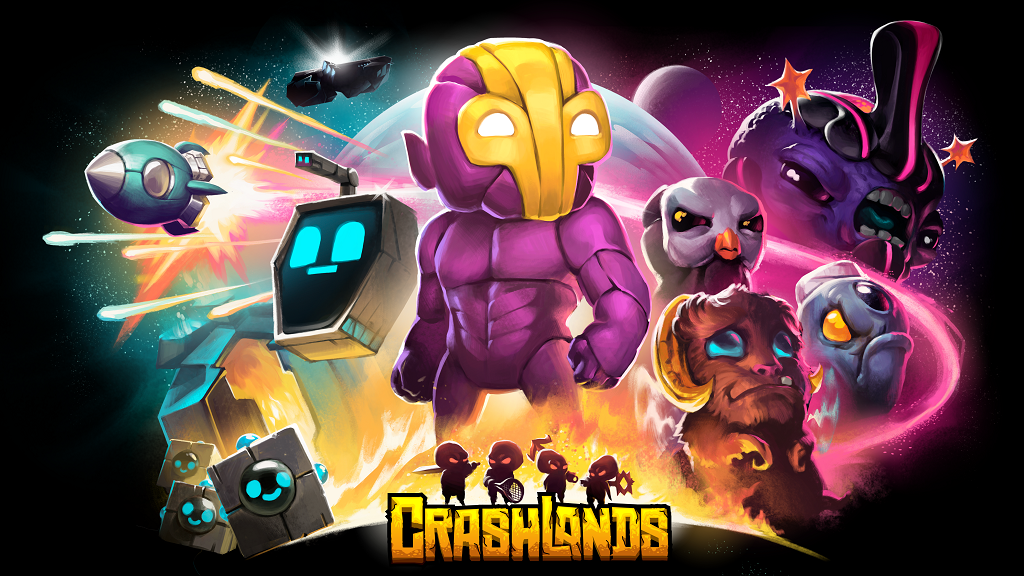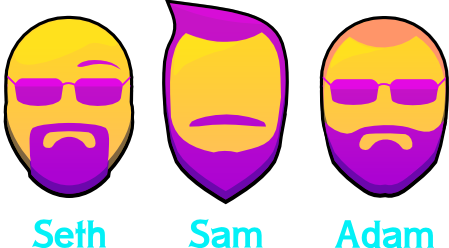What Fueled the Success of Indie Hit Crashlands
Crashlands was a surprisingly refreshing indie gem for both PC and mobile gaming platforms – something that not too many games can claim. Even the story of how the game was created is worth attention. The three Coster brothers were inspired to make the game after finding out that one of them, Sam had cancer.
Now that they’re enjoying the results of their latest and most successful work, they have taken some time to share on Gamasutra the experience that they have got while making Crashlands .
Here are some of their main revelations along with implications for others in the game industry.
Competition: Aesthetically and Functional Similarities
The first point the Coster brothers make was how similar Crashlands was to another indie game, Don’t Starve. Both featured crafting, farming, survival mechanics, and highly stylized aesthetics.
The Coster brothers noted that the association with Don’t Starve negatively affected sales thanks to claims of “cloning” an existing product, though Crashlands definitely benefited by appealing to an existing market. The similarities between the two games were enough to make the Crashlands experience comfortable enough to ease into, while the differences were enough for Crashlands to stand on its own two feet. This is an important conclusion for game marketing. Associating a new launching product with an already existing successful product on the market is a challenging task of keeping a right balance. Getting close enough to the successful product to benefit from its features, and at the same time staying far enough not to fall into a “cloning” trap.
Platform Bias: PC Gamers Frown on Ported Mobile Titles
The second point that the Costers brought up was their experiences with dissatisfied PC players claiming that the version on Steam is a “crappy” port of the mobile version – pointing to features that they were not happy with and with the accusation that these features were “dumbed down” for mobile.
The lesson that the Costers learned from this experience was that they would release future titles on Steam before bringing the game over to mobile platforms. They would rather work around the existing the biases of player audience instead of trying to directly confront those beliefs. This attitude of PC players – hostility towards games they perceive as mobile and therefore “inferior” – is an important point for game marketing of mobile titles.
Review Embargos: How Breaking Them Affects Sales
The next point raised was how an embargo on early reviews was broken by one YouTuber, leading to a premature release of video reviews before the Butterscotch Shenanigans team was ready.
Other YouTube reviewers who kept embargo were furious that some random YouTuber was given what they thought an ‘exclusive’ rights to review the game early. The team then decided to immediately lift the review embargos for all YouTubers – which was what the team believed would minimize damage to the relationships that they had built with YouTubers. If Butterscotch Shenanigans had not dealt with the crisis immediately, the YouTubers could have boycotted the game – damning it to obscurity. This highlights how powerful YouTube personalities have become in promoting independently published games.
Lines of Communication: Day One Flood
The Coster brothers then noted how all their channels, from on-site forms to social media platforms, were flooded with requests, feedback, bug complaints and press inquiries on the day that Crashlands launched.
Due to the lack of manpower, Butterscotch Games decided to narrow down all platforms of communication to just one contact form – allowing them to save time on responses without having to spread themselves out too thinly. They also reshaped their social media platforms into places where they engage with fans, not provide customer support – a lesson that game marketers can make when it comes to their own platforms of communication.
Beta Testing: Gathering Useful Feedback
One of the first points raised by the Coster brothers to work in favor of the game was adopting a beta testing phase – which revealed over 2,000 bugs and feedback points over a period of four weeks.
This month-long beta testing phase allowed the team to launch a more polished product, which would have otherwise been plagued with issues obstructing its commercial release. The emphasis on hunting bugs and balancing gameplay elements is something that will ultimately benefit the players, which is why beta tests need to be more than early-access tools designed to make players to pay for an unfinished game. This is something that may help game marketers better understand how important beta testing is when it comes to quality control.
Tools: Investing the Time and Effort for Future Results
Another point the brothers raised was how the team spent the time to learn how to use a creator tool to manage the narrative and free up time for the lead programmer to continue adding content to the game. Putting in the time and effort to learn new tools can improve productivity, reduce errors and help free up manpower to work on other priority projects. This makes training experienced personnel and licensing out specialist software much more profitable for game developers in the long run – assuming they can properly utilize the tools at their disposal.
Platform Support: PR from Mainstream and Small Media Outlets
Crashlands benefitted greatly not just from the stores selling the game, thanks to features and awards from Steam, iTunes and Google Play, but from smaller video gaming press like streamers and YouTubers.
Spending time to get in touch with as many media in the video gaming industry as possible pays off. The Butterscotch Shenanigans did this by sending emails out to as many news outlets as they can. This allowed the team to get more press coverage for itself. That, and the major platforms recognized that they had a high-quality product on their hands – pushing it on front pages to further drive sales. This approach may work on many levels, for example for indi developers, or for small retailers, reaching out to game publishers and distributors with intention of securing packages that will help make their own storefronts more attractive. Reduced price tags, advance copies, beta keys – all these can help marketers bring in potential customers to their doorsteps.
Commitment: Keep Going Forward
The Coster brothers end their thoughts by saying that their commitment was what allowed them to see the game through – despite going through a lot of hard times.
This is where causes come into the picture. The Coster brothers rallied around a cause, that of Sam’s cancer, to fuel their desire to finish the project. Without a cause that a trading team can call their own, workers and employees and maybe even the owners themselves will be less motivated to stay the course when facing hardships instead of working to overcome said hardships in the first place.
Related Topics: Coster brothers, Crashlands




